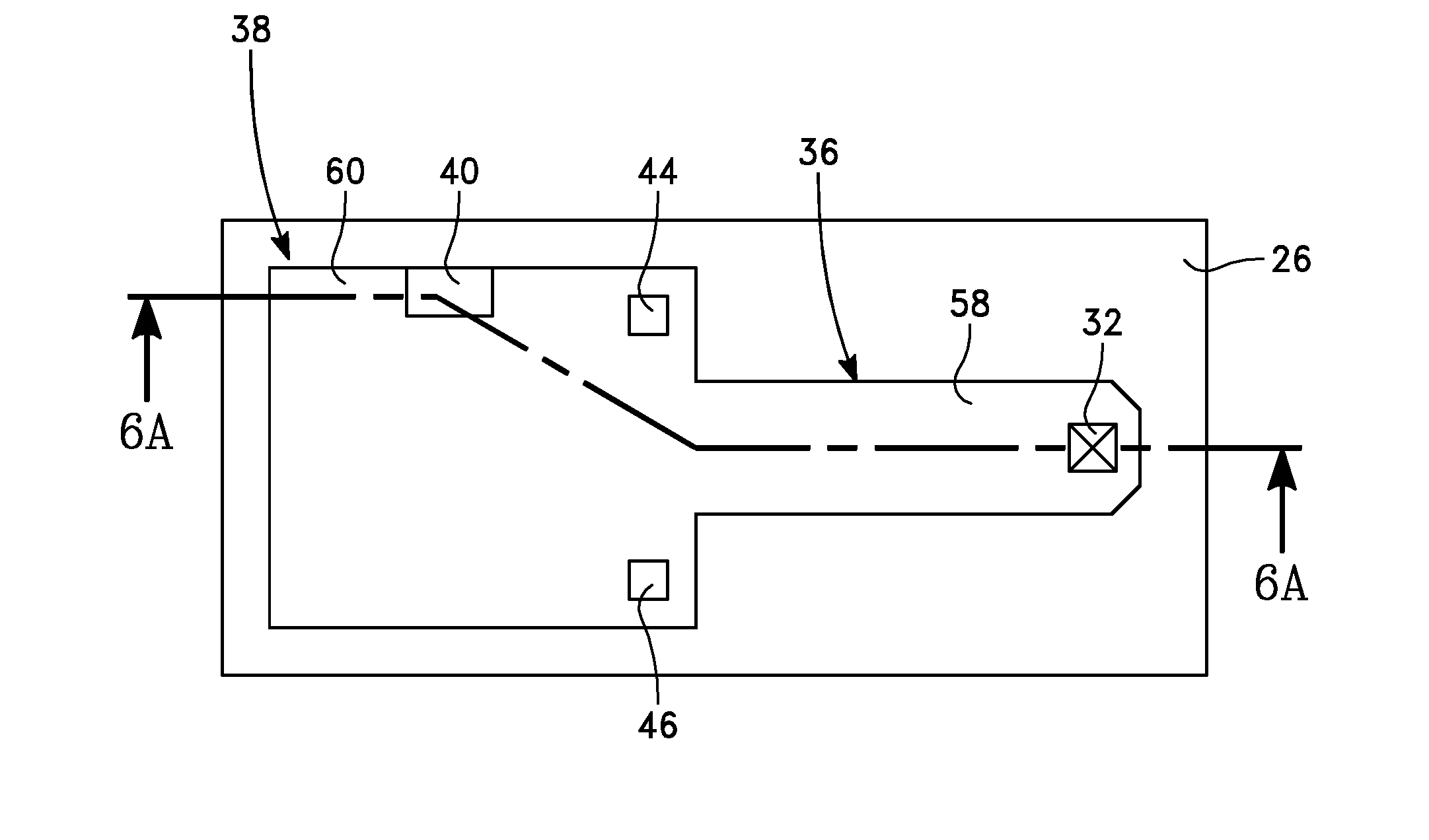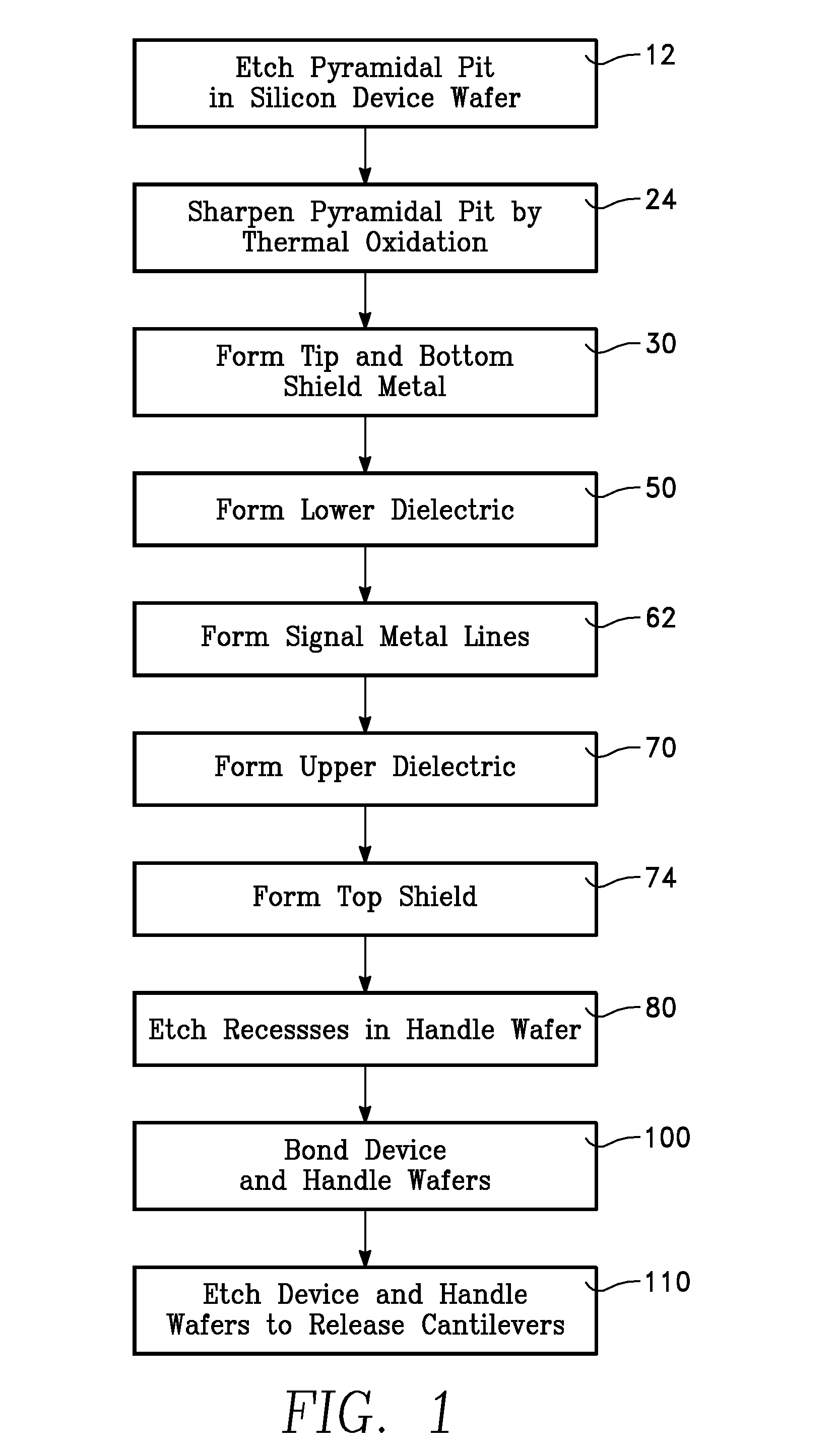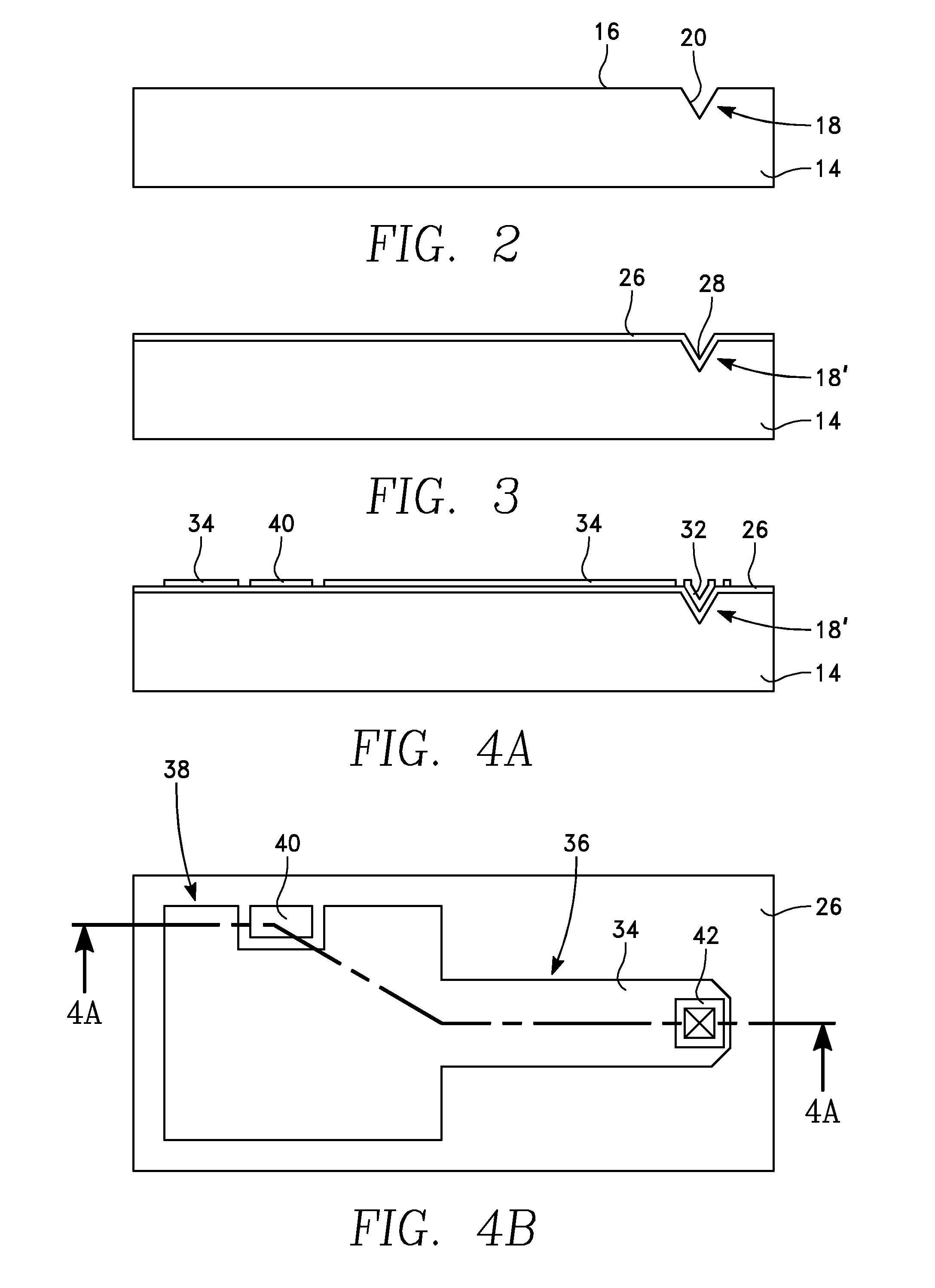Fabrication of a microcantilever microwave probe
a technology of microwave probes and fabrication methods, which is applied in the field of microcantilever microwave probe fabrication, can solve the problems of inability to similarly anisotropically etch metals needed for microwave microscopy, inability to design microwave probes inherently more complicated, and difficulty in fabricating microwave probes, etc., and achieves enhanced shielding of the conducting path, low cost, and high yield
- Summary
- Abstract
- Description
- Claims
- Application Information
AI Technical Summary
Benefits of technology
Problems solved by technology
Method used
Image
Examples
Embodiment Construction
[0034]A first embodiment of a microwave probe includes a sharp metal tip projecting from a distal, free end of a cantilever. The proximal end of the cantilever is fixed to a support, also called a handle. A conduction path along the cantilever connects the metal tip to microwave electrical elements on the support.
[0035]As a means of introduction, in one exemplary process for forming the microwave probe, the metal tip is developed in a crystalline device substrate and the cantilever and its metal and dielectric layers are formed in layers deposited on the device substrate and then patterned. The so developed device substrate is bonded to a handle substrate. The remnant portion of the device substrate is removed, and the support is patterned in the handle substrate. A more detailed process flow is presented in the flow diagram of FIG. 1.
[0036]A first step 12 of this process processes a device wafer 14, as illustrated in the cross-sectional view of FIG. 2, of monocrystalline silicon ha...
PUM
| Property | Measurement | Unit |
|---|---|---|
| angle | aaaaa | aaaaa |
| apex angle | aaaaa | aaaaa |
| tip apex angle | aaaaa | aaaaa |
Abstract
Description
Claims
Application Information
 Login to View More
Login to View More - R&D
- Intellectual Property
- Life Sciences
- Materials
- Tech Scout
- Unparalleled Data Quality
- Higher Quality Content
- 60% Fewer Hallucinations
Browse by: Latest US Patents, China's latest patents, Technical Efficacy Thesaurus, Application Domain, Technology Topic, Popular Technical Reports.
© 2025 PatSnap. All rights reserved.Legal|Privacy policy|Modern Slavery Act Transparency Statement|Sitemap|About US| Contact US: help@patsnap.com



